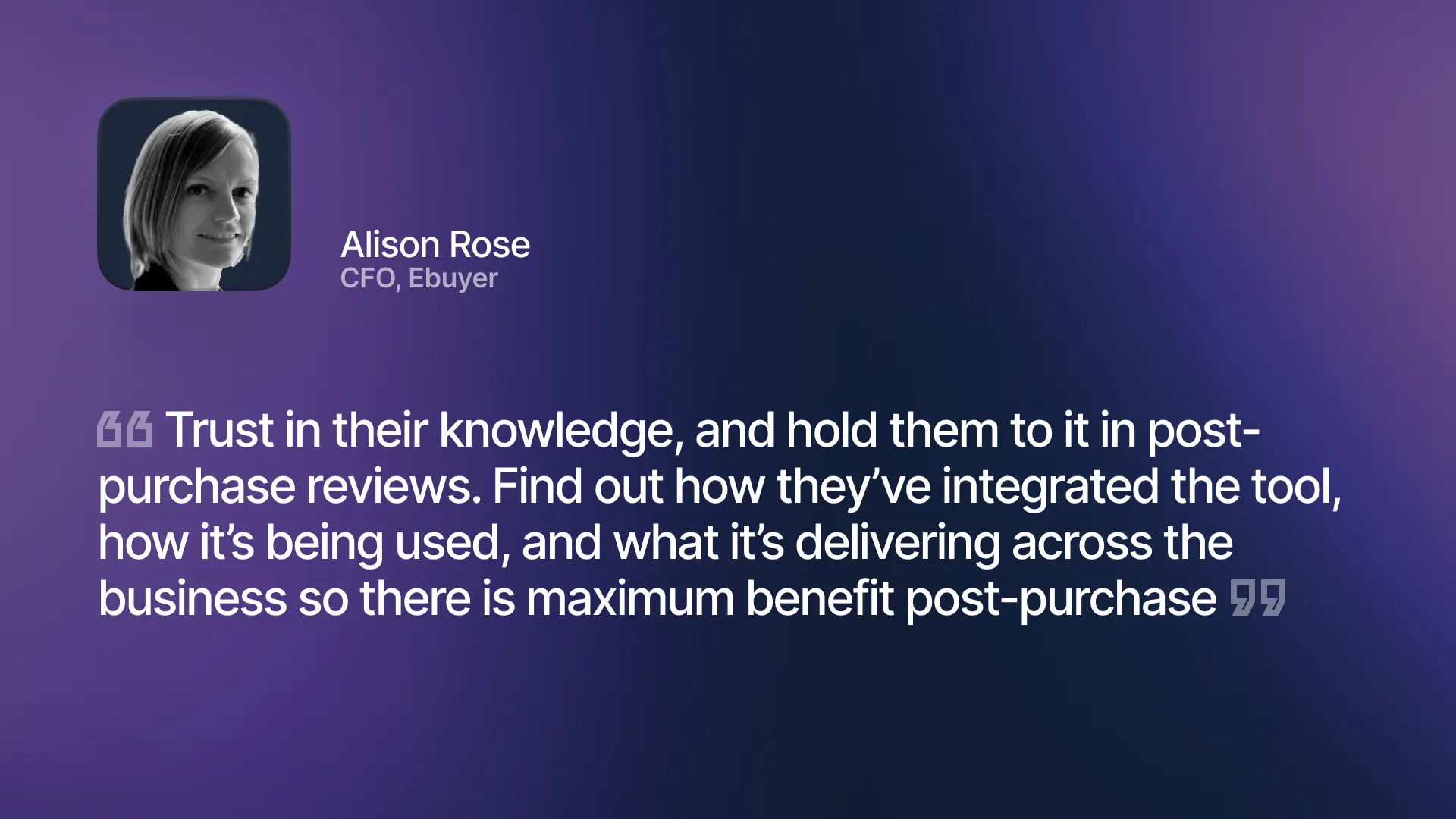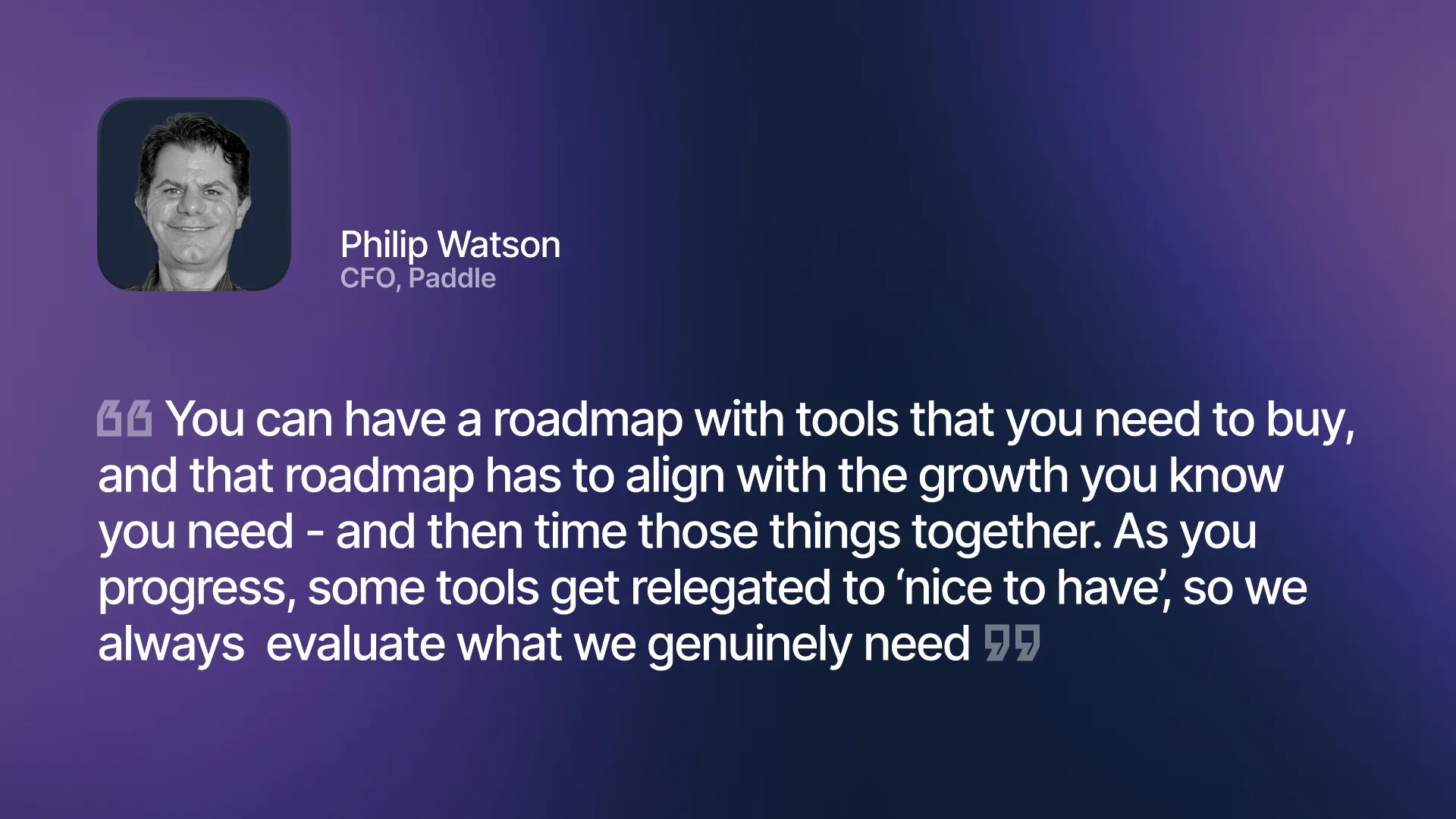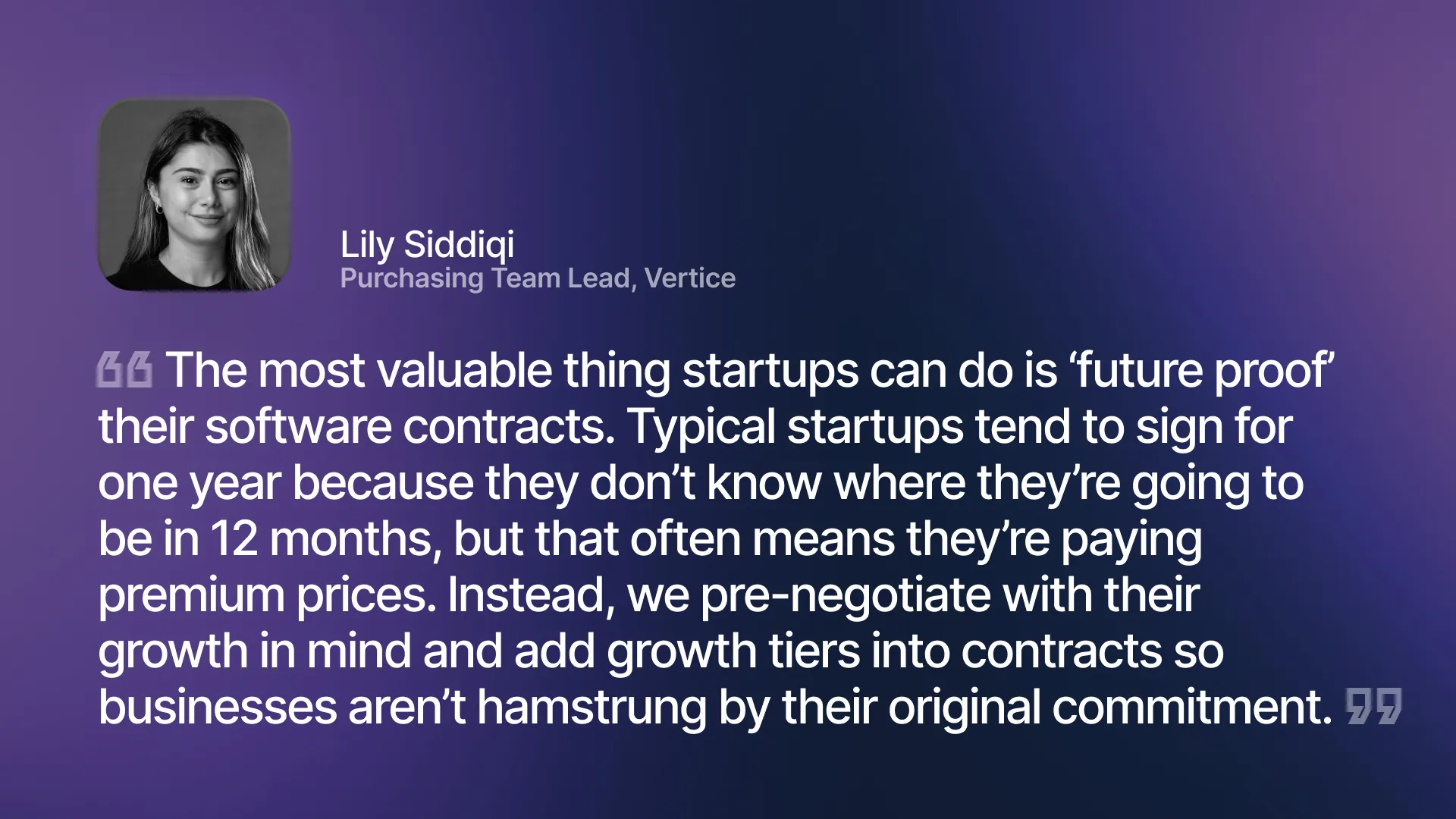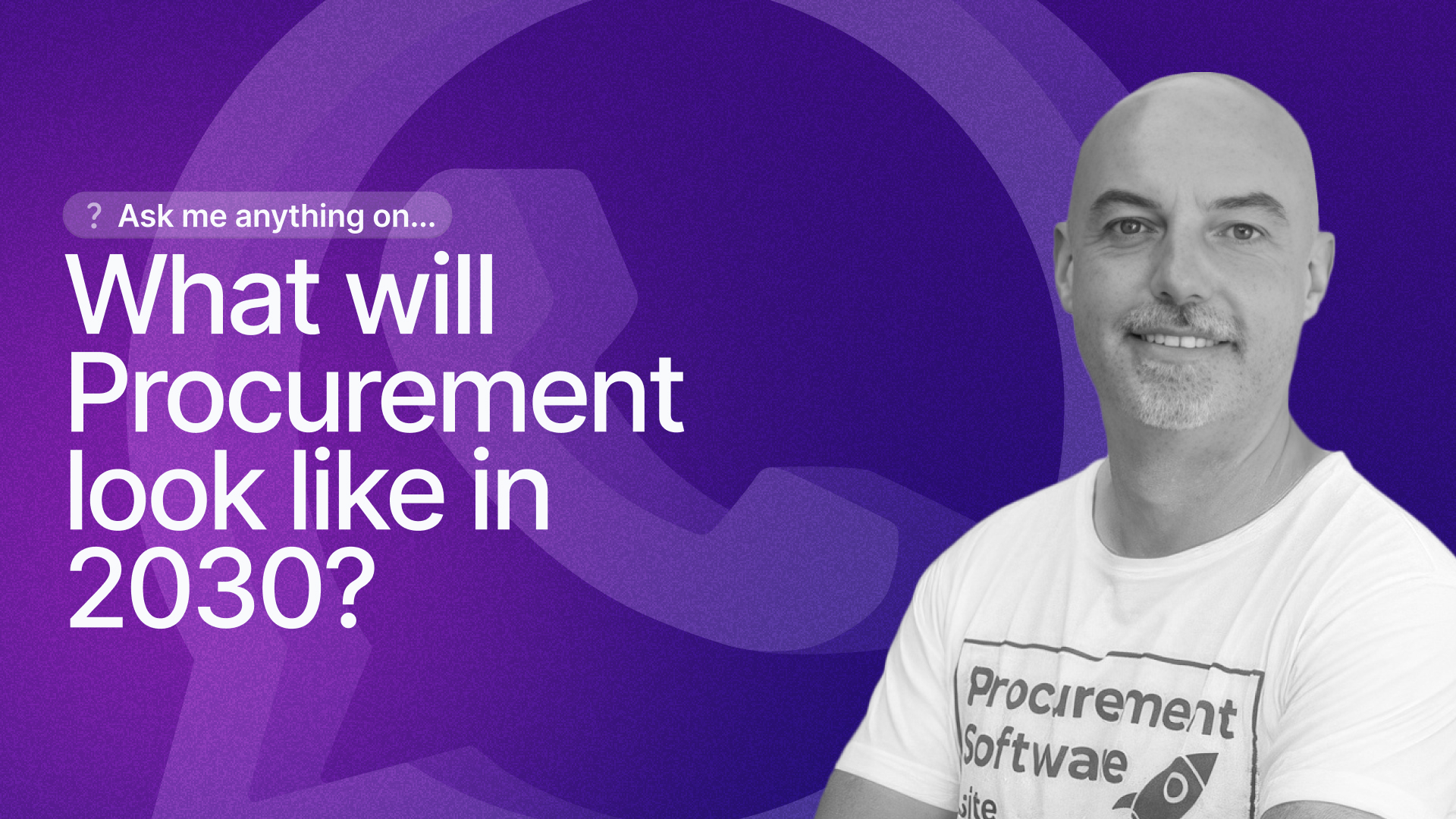How to build a lean tech stack without limiting your growth




Take a self-guided tour of the platform.
Optimize every dollar your team spends on SaaS.
See why Vertice is trusted by top procurement leaders.
CFO-focused strategies for reducing preventable spend and unlocking maximum value from software investments.



Spending your way to success and ‘growth at all costs’ are no longer accepted ways to run a business. Cost scrutiny and profitability are the new mottos.
And SaaS and cloud spend is no different. High costs can no longer be dismissed as “just what they are.”
But cutting tech stack costs cannot come at the expense of curtailing a business’ ability to grow. It’s a delicate balance - and one that can have severe consequences if not maintained.
To help finance and procurement leaders solve this challenge, we held a webinar with top CFOs from Paddle, Ebuyer, Carestone and EmergeOne on how they balance efficiency with growth.
The panel shared their advice for taking a more strategic approach to SaaS management, including:
- A CFO should trust the decisions of their department when it comes to tools, but question business cases - making sure they’ve considered both the short and long term context.
- Growth at all costs is no longer possible. The name of the game is efficiency growth, which relies heavily on cost effectiveness and ROI.
- Adopting AI should revolve around whether you have the quality of data to power it.
- Multi-year contracts may seem attractive because of discount opportunities, but could lock you into tech that you don’t need in the long run.
- Regular analysis of tech stacks helps identify the need for more capable solutions and reduces SaaS bloat.
Our panelists:
.webp)
CFOs should trust their colleagues
Getting involved with the intricacies of technology procurement can be a time sink. It’s also rare for finance leaders to have specific insight into why a specific tool is the most suitable.
It’s therefore often better to leave those with more knowledge to build the business case, and for the finance leader to question it, clarify it, and sign it off if the numbers and answers stack up
But that doesn’t mean CFOs can lose control of what is being purchased and why.
Finance leaders must stay on top of how a SaaS tool is delivering value and whether it stacks up against the pre-purchase predictions made. That way, their time investment is reduced across the process, but they can still ensure ROI.

Ultimately, is the technology enabling growth without inhibitive costs? Consider if the value a tool provides will help a company hit certain growth milestones, like funding rounds and IPOs.
Be creative with your questions to avoid the biggest SaaS purchasing mistakes
Knowing which tool is worth the investment can be a big challenge for finance leaders. This is compounded by some ‘point solution’ tools being quite narrow in their capability, and that a tool that works for one company may not be the right solution for another.

Another challenge is contract structures. If the tool isn’t delivering, companies often don’t have the scope to walk away. So it becomes a blot on the balance sheet.
Signing up to multi-year contracts might bring costs down, but runs the risk of locking yourself into a cost that isn’t giving you good ROI for a long time - or is no longer suitable as you scale up. Vendors rarely include break clauses, but if your negotiating position is strong, this could be something they consider.
What’s this actually for, and is it worth the risk?
CFOs have to handle a lot of pressure and stakeholders when it comes to SaaS. A department wants something that’ll solve a problem; finance wants to ensure it’s a sound investment; and leadership wants to invest in tech to enable growth.
Understanding a tool’s purpose underpins everything. Achieving this means you:
- Can make more sound financial decisions
- Can align investment into technology with departmental / company goals
- Build a roadmap to plan out your growth with technology, and consult it along your journey to help spot efficiency opportunities.

One area that CFOs universally agree on is the demise of the ‘growth at all costs’ strategy that used to be the norm, especially prior to the Covid pandemic - which exposed businesses to their financial frailties like never before.
The ‘measurement of risk’ is important here, and the importance of failing fast. Balancing growth and efficiency shouldn’t stop you from spending or investing in new tools, but you must evaluate the proposition beforehand, And if you get it wrong, which happens, ensure you can move on quickly from it.
This comes back to shielding yourself from inhibitive contracts or ‘ultra-sticky’ tools that make it difficult to migrate away from.
Plan ahead to future proof your tech stack
Our panel agreed that standing still is not an option when it comes to gaining maximum ROI from your tech stack. Technologies should be regularly reviewed to see if they are still providing the solution they were originally chosen for. Situations change as growth is achieved, and now-unsuitable software creates financial anchors.
But it’s not all about cutting software. It’s finding the balance between what will help future growth, and what’s needed now. For example, a start-up might not choose an enterprise CRM like Salesforce, as this would be expensive and come with far more features than they would need. Their current situation would necessitate something simpler and cheaper, with an eye to upgrading later as they grow.
We asked our purchasing team for their advice on this:

Finance AI software requires a cautionary approach - and clean data
The explosion on AI software means that businesses are currently in a conundrum about how (and if) they should evolve their tech stack:
This seems to be a common theme with AI - that it’s en route to greatness but isn’t there yet. Chatbots are a great example of where AI has been able to make an immediate impact, but financial AI relies heavily on the proprietary data of a company - but having clean data sets is rare. In other words, the age-old equation of garbage in = garbage out.
Aarish urged CFOs to take a pause before rushing to buy AI tools:
Financial leadership isn’t all about data and numbers, but decision making. Spotting trends in a balance sheet, relaying key financial information to the leadership team so that company strategies are more sound. AI has a role to play as a co-pilot in strategic decision making – by collecting vast amounts of data, interpreting it and creating forecasts. But ultimately the making of any decision must remain with the human, allowing for their instinct and experience to meld with the AI-driven data.
In summary - it’s hard for a CFO alone to balance efficiency and growth
A finance leader needs to know when to leave buying decisions to departmental leaders, but also when and how to get involved. Plus, they need to know the state of the SaaS marketplace, the ins and outs of SaaS contract negotiation, and how to plan for the future within SaaS contracts.
It’s a minefield. That’s why so many CFOs are looking for extra expertise to not only release the burden of SaaS negotiation and management from them, but also to support their procurement teams. That’s where Vertice comes in.
Vertice is the premier platform for finance leaders to optimize their SaaS spend. With world-class technology and a team of expert buyers, you can:
- Keep track of all your SaaS contracts and renewals in one place.
- Let Vertice handle, or support with, your SaaS purchasing, and save up to 25% on your spend.
- Reveal underutilized and unknown company subscriptions.
- Gain key insights into your contracts to spot opportunities to re-negotiate for better terms.
- Leverage our vendor benchmarks and insights from over 16,000 companies.
Vertice is managing over $3.4bn for hundreds of CFOs worldwide - with dedicated support and insight from our procurement experts so they can be comfortable in getting the burden of SaaS contract management off of their plate without losing oversight or risking a drop in quality.
Speak to one of our team today to discover how Vertice can transform your SaaS management.
.webp)



.jpg)


.jpg)

.jpg)


.webp)

.webp)



